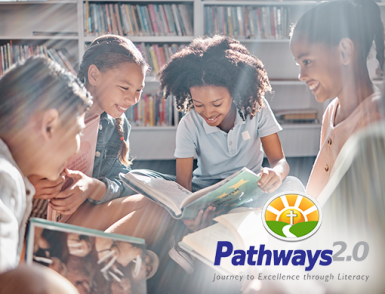 By: Kendall Hunt RPD with contributions from the editorial team
By: Kendall Hunt RPD with contributions from the editorial team
Welcome back to the classroom! Let’s explore how to successfully incorporate the Pathways2.0 reading and language arts program into your classroom experience. This program is designed around beloved, award-winning books that captivate students, including timeless classics like Sarah, Plain and Tall by Patricia MacLachlan and contemporary favorites such as A Long Walk to Water by Linda Sue Park.
Educators who have implemented this faith-based customized curriculum often commend the emphasis placed on the entire book. If you appreciate great literature and hands-on reading, this language arts program is perfect for you! Instead of relying on textbooks and simplified text, students engage with authentic books at every reading level.
Here are six reasons why reading entire, living books as a class effectively nurtures a love for reading among young learners:
It’s fun for learners
Pathways2.0 utilizes fun and interesting books to inspire students. Using a book with a compelling storyline to teach important language arts concepts makes learning enjoyable, unlike reading staid and formulaic textbooks.
It’s convenient for educators
When learning is based around a single shared (and award-winning) book, it’s easy for educators to keep track of resources. You can be confident that your students are learning all the necessary concepts without needing to find additional curriculum options. One educator shared, “I love how the Pathways2.0 Reading and Language Arts curriculum uses each unit’s book as the steppingstone for all the various language arts skills students need. You’re not juggling several readers or various programs trying to cover all your bases.”
It helps students build their reading stamina
The more students are exposed to whole books, the more they increase their stamina and prepare for a higher level of learning. Sharing whole books as a class means that it’s okay for students to struggle. One educator says, “With an arsenal of supports and scaffolds, evolving readers will gradually be able to interact with the text on an equal footing with their peers,” he explains. “This collective lesson in grit and growth mindset will then be carried over when these readers actually stick with their independent book choices and reap the rewards of reading entire novels on their own.”
It provides a context for discussing and applying skills
Many teachers love how each unit of Pathways2.0 incorporates award-winning anchor textbooks to help provide context for applying the skills learned within the unit. With a shared classroom anchor text, learners can discuss the same concepts in the same context and see those concepts in action over the course of a whole book, not just a short story or excerpt. Whole books allow teachers to discuss multiple literary traits and skills within the context of the same story, helping students connect how those traits work together. Other skills, like predicting, are also difficult to use with excerpts, but through whole books, students can practice those strategies.
It offers cross-curricular connections
The use of trade books and living books as the backbone of the lesson plans makes it the perfect candidate for using as a thematic unit,” states a member of the editorial development team. “Using living books makes it easy to connect language arts lessons with other subjects.” Through whole books, the class will learn and retain information about history (our Pathways 2.0 Yesterday theme) or science (our Environment theme) in ways they’ll enjoy.
It leads to communal discussions
Most importantly, sharing a whole book helps students fall in love with reading—together. An experienced educator is quoted by stating, “when they experience a story with their peers, a sense of community and scholarly inclusion is created … the experience becomes one of not just reading the book together but of collectively living the book.”
Through Pathways2.0, all learners can contribute to a collective narrative as they tackle a shared, whole book, enriching their reading experience and strengthening their self-confidence.
What are your favorite examples of whole books? Which whole books have your students previously loved?